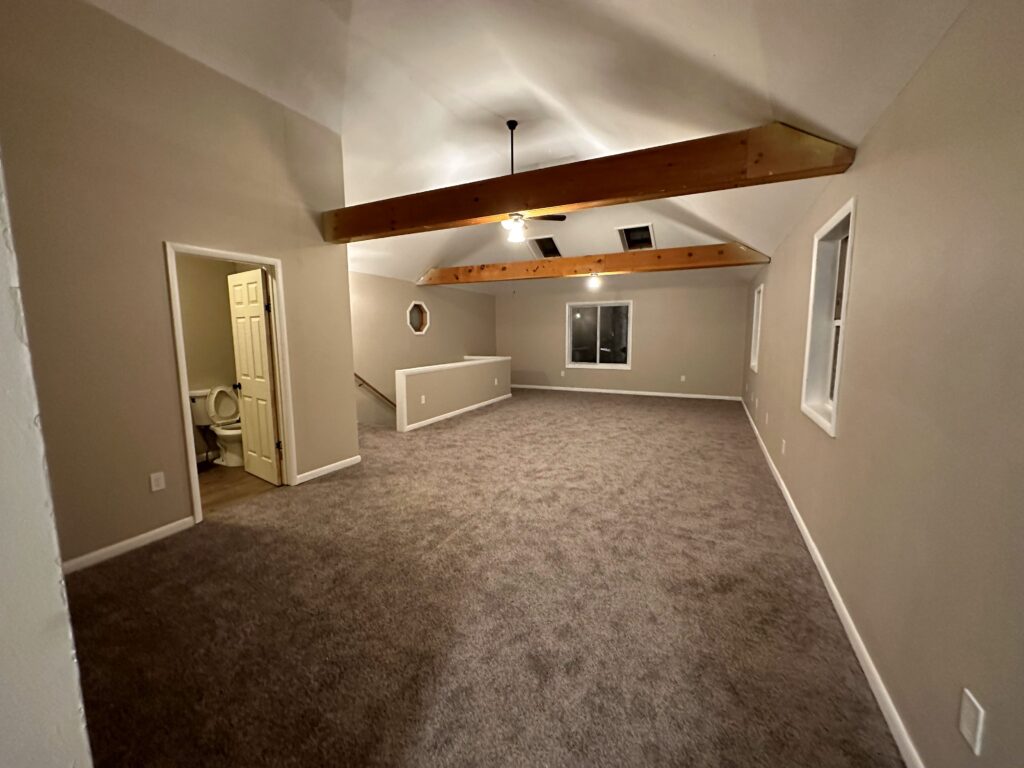Painting the interior of your home can be a transformative DIY project, but it’s easy to make mistakes that can affect the finished product.
Whether you’re a seasoned DIY enthusiast or tackling your first paint job, understanding common painting mistakes and how to avoid them can make a big difference in achieving professional-looking results.
In this article, we’ll explore some of the most frequent errors made during interior painting projects and provide tips on how to steer clear of them.
1. Skipping Surface Preparation
One of the most common painting mistakes is failing to properly prepare the surface before painting. Many DIY painters are eager to get started and skip this crucial step, but it can lead to poor paint adhesion, an uneven finish, and a shorter lifespan for your paint job.
How to avoid:
– Clean the walls thoroughly to remove dirt, dust, and grease.
– Sand any rough spots or glossy surfaces to help the new paint adhere better.
– Fill holes and cracks with spackle and sand smooth once dry.
– Apply a primer coat, especially when painting over dark colors or porous surfaces.
Remember, prep work is essential for a professional-looking finish. Taking the time to prepare your walls properly will ensure that your paint job looks great and lasts longer.
2. Using Low-Quality Paints and Tools
Another common mistake is trying to save money by using cheap paint and tools. While it might seem cost-effective in the short term, low-quality materials can lead to poor coverage, uneven application, and a less durable finish.
How to avoid:
– Invest in high-quality paint from reputable brands. Quality paint often provides better coverage, requiring fewer coats and saving time and effort.
– Use good-quality brushes and rollers appropriate for your paint type and surface.
– Don’t forget to buy painter’s tape, drop cloths, and other necessary supplies.
Remember, using quality paint and tools can make your DIY paint project easier and result in a more professional-looking finish.
3. Overloading Brushes and Rollers
Applying too much paint at once is a common mistake that can lead to drips, splatters, and an uneven finish. It’s tempting to load up your brush or roller to cover more area quickly, but this often results in a messy application.
How to avoid:
– Dip your brush about 1/3 of the way into the paint, tapping off excess.
– When using a roller, fill the roller tray about halfway and roll the excess off on the tray’s ridges.
– Apply paint in thin, even coats rather than thick layers.
– Use long, smooth strokes to distribute the paint evenly.
By applying paint in controlled amounts, you’ll achieve a smoother finish and reduce the likelihood of drips and splatters.
4. Ignoring Drying Times
Impatience can lead to one of the most frustrating painting mistakes: not allowing enough drying time between coats. Painting over partially dry paint can cause peeling, bubbling, or an uneven finish.
How to avoid:
– Read the paint can for recommended drying times between coats.
– Factor in environmental conditions like humidity and temperature, which can affect drying times.
– Plan your project to allow for adequate drying time between coats.
– If you’re unsure, it’s better to wait longer than to rush into the next coat.
Respecting drying times will help ensure that each coat of paint adheres properly and dries to a smooth finish.
5. Improper Tape Removal
Using painter’s tape is an excellent way to achieve clean lines and protect surfaces, but removing it incorrectly can damage your fresh paint job.
How to avoid:
– Remove tape when the paint is dry to the touch but not fully cured.
– Pull the tape off at a 45-degree angle, away from the painted surface.
– If the paint starts to peel with the tape, use a razor blade to score along the edge of the tape before removing it.
– For stubborn tape, use a hairdryer to warm the adhesive before carefully peeling it away.
Proper tape removal techniques will help you maintain crisp, clean lines and prevent damage to your newly painted surfaces.
6. Choosing the Wrong Paint Sheen
Selecting the wrong paint sheen for a room or surface is a mistake that can affect both the appearance and functionality of your paint job.
How to avoid:
– Consider the room’s purpose and traffic level when choosing a sheen.
– Use flat or matte finishes for low-traffic areas and to hide surface imperfections.
– Choose eggshell or satin finishes for moderate-traffic areas like living rooms.
– Opt for semi-gloss or gloss finishes in high-moisture areas like kitchens and bathrooms.
– Remember that higher sheens are generally more durable and easier to clean but also highlight imperfections.
Selecting the appropriate sheen will ensure your paint not only looks good but also performs well in its intended environment.
7. Not Testing Paint Colors
One of the most common painting mistakes is choosing a color without properly testing it in the space. What looks great on a small color swatch might not work as well when applied to an entire room.
How to avoid:
– Get sample sizes of your chosen colors and paint large swatches on the wall.
– Observe the swatches at different times of day to see how natural and artificial light affects the color.
– Consider how the color interacts with your existing furniture and decor.
– If you’re unsure, consult with a professional painter or interior designer for advice.
Taking the time to test colors can save you from the disappointment and expense of repainting an entire room.
8. Forgetting to Protect Non-Painted Surfaces
In the excitement of starting a paint project, it’s easy to overlook protecting surfaces you don’t intend to paint. This oversight can lead to time-consuming cleanup or permanent damage.
How to avoid:
– Use drop cloths to cover floors and furniture.
– Remove the outlet and switch covers before painting.
– Use painter’s tape to protect trim, windows, and other surfaces.
– Cover light fixtures and ceiling fans.
– Remove or cover doorknobs and hardware.
Proper protection of non-painted surfaces will save you time and frustration in the long run.
9. Using the Wrong Type of Paint
Using oil-based paint where water-based is appropriate (or vice versa) can lead to poor adhesion, bubbling, or peeling.
How to avoid:
– Determine what type of paint is currently on the surface you’re painting.
– Use water-based paint for most interior surfaces, as it’s easier to clean up and has lower VOCs.
– Reserve oil-based paint for specific situations where extra durability is needed.
– If you’re unsure, consult with a professional or the staff at your local paint store.
Using the correct type of paint will ensure better adhesion and a longer-lasting finish.
10. Rushing the Job
Perhaps the most significant mistake is trying to rush through the painting process. Hurrying can lead to sloppy work, missed spots, and an overall poor finish.
How to avoid:
– Plan your project realistically, allowing enough time for preparation, painting, and drying.
– Work methodically, completing one section at a time.
– Take breaks to avoid fatigue, which can lead to careless mistakes.
– If you don’t have the time to do the job properly, consider hiring a professional painter.
Remember, a good paint job takes time and patience. The extra effort will be worth it when you see the professional-looking results.
Conclusion
Avoiding these common painting mistakes can help ensure that your next painting project is a success. By taking the time to prepare properly, using quality materials, and following best practices, you can achieve a professional-looking finish that will enhance your home’s interior for years to come.
Whether you’re painting a single room or tackling your entire house, keeping these tips in mind will help you avoid frustration and achieve the beautiful results you’re looking for.
If you want any help with your interor painting project, just contact us. Our team of experienced professionals is ready to assist you in making your home look its best.

